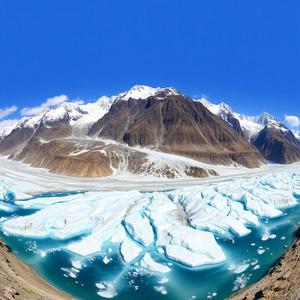World Water Day 2025
The rapid melting of glaciers can also lead to conflicts: regions affected compete for drinking water, access to arable land, and hydropower, which can create tensions, especially in water-scarce areas, generating fights over resources. Additionally, flooding and droughts resulting from melting can destabilize local communities, further increasing social and economic tensions. Therefore, the protection of glaciers is vital for both the environment and global social stability.
· Many countries are at risk due to glacier melting, which can lead to conflict situations. These include:
· Nepal – The glaciers of the Himalayas form the basis of local water supply, and their melting can cause landslides and floods, endangering local communities.
· India – The glaciers of the Himalayas and other mountain ranges are a critical water source, and water shortages or floods might trigger conflicts in agriculture and industry.
· Pakistan – The glaciers in the Gilgit-Baltistan region are an important part of Central Asia's water resources, and their melting could intensify the struggle for water.
· Bangladesh – Low-lying countries like Bangladesh face increased flooding and sea-level rise due to glacier melting, which can lead to numerous conflicts.
· Chile and Australia – Significant melting in the glaciers of both countries is causing a reduction in water resources, which can result in agricultural issues and social tensions.
· Sweden and other Scandinavian countries – The melting of glaciers affects the region's water resources, leading to economic consequences and potential conflicts over water consumption.
